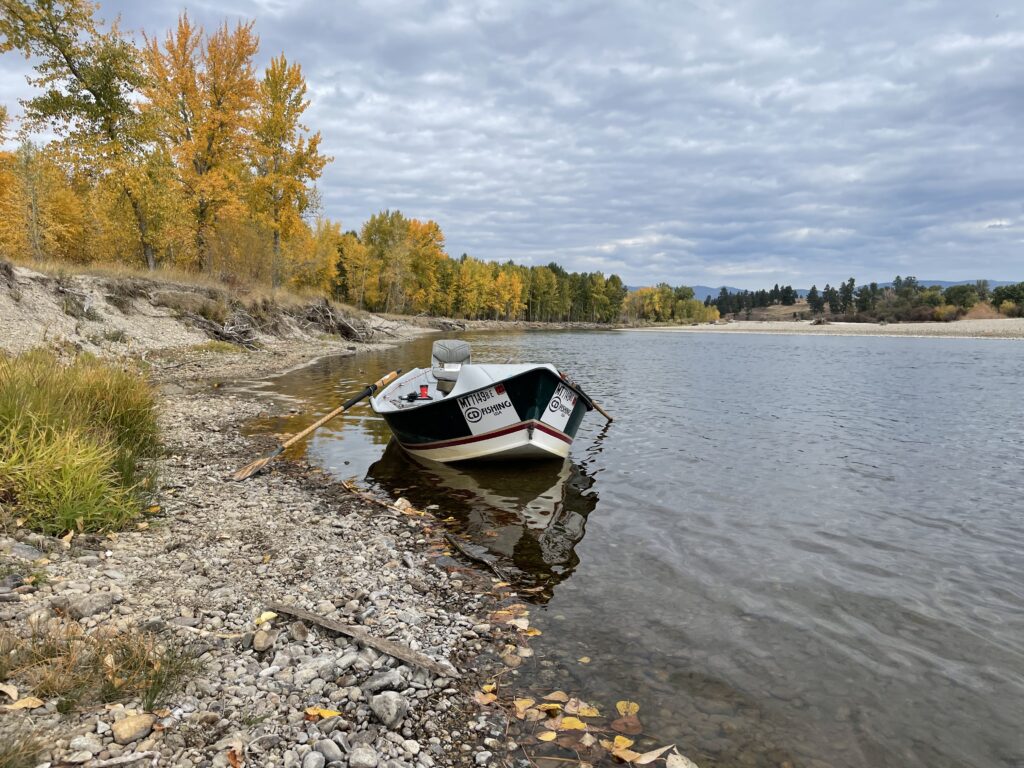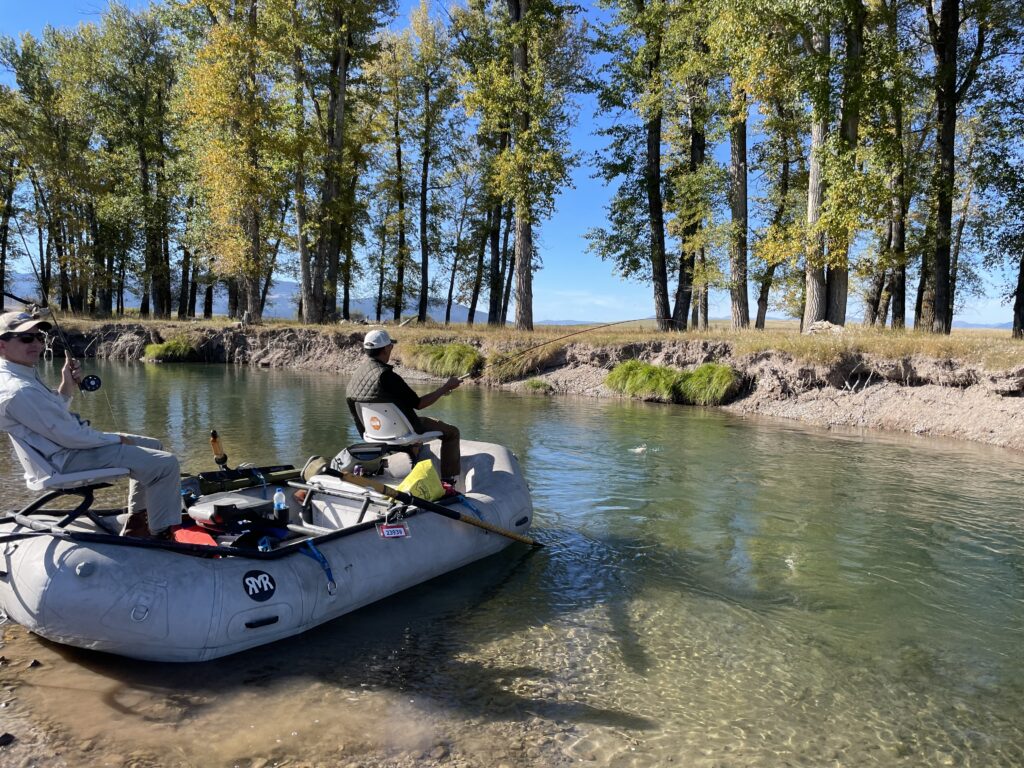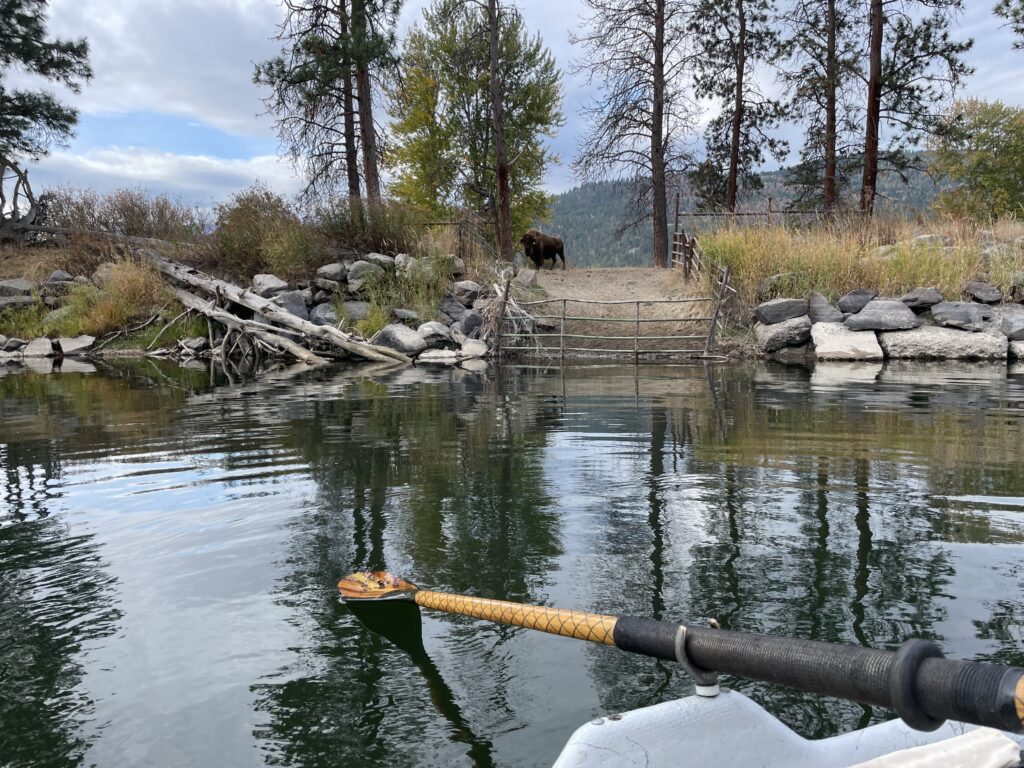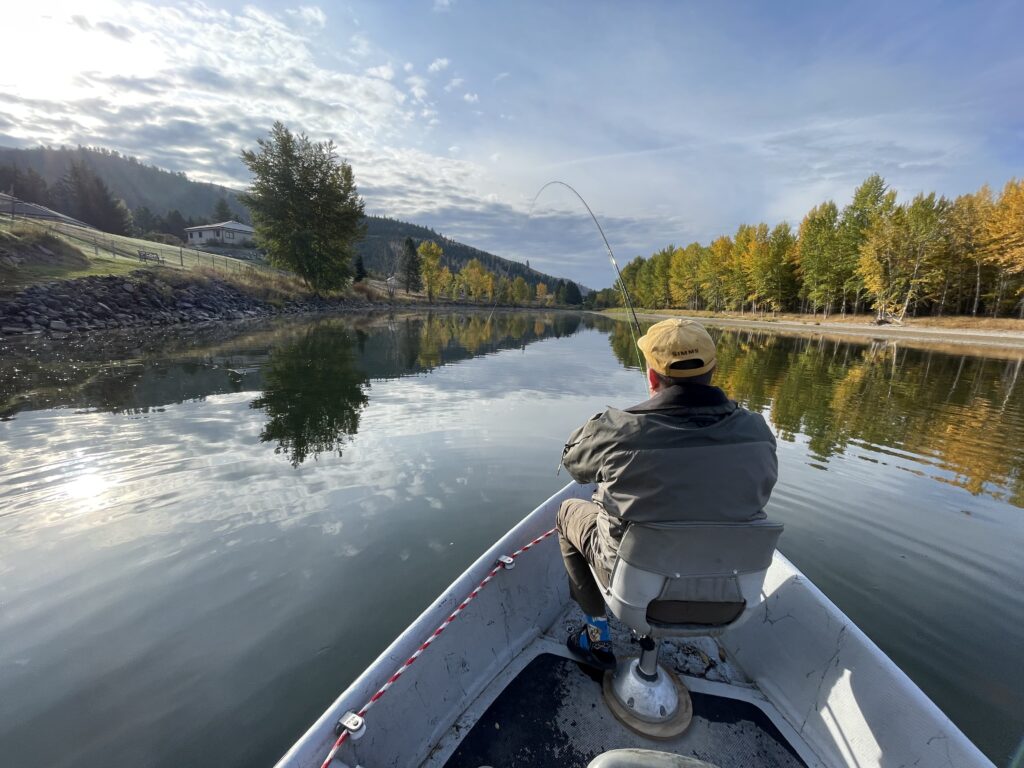Dry Fly Fishing from a Boat; Holding the High Ground

Dry Fly Fishing from a Boat Mandates that we Unlearn
If you’re like me, you started flyfishing with your feet on the substrate. The fundamentals of the dead drifted dry fly presentation were learned via walk and wade excursions. In fact, where I was reared, fishing from a floating device was largely prohibited. We used boats as taxis to access wadeable banks, islands, and gravel bars. From there, we learned the nuances of presentation on our feet, which generally involved casting upstream or cross-stream to rising fish. Upon moving to Montana, where boats became the primary means of the angling platform, I realized my skill set was working against me. Simply, I didn’t understand that I needed to aim downstream. When dry fly fishing from a moving vessel, I had to learn the principle of “holding the high ground.”

Holding the High Ground from the Boat
The synergy between oarsman and angler is that of caddy and golfer. The “caddy” reads the situation and sets the “player” up for the shot. When eyeing prime holding water or rising fish, an experienced rower anticipates by positioning the boat upstream and as far away from the intended target within the angler’s ability. 50 feet is good, 70 feet is much, much better. Holding the high ground means that the fly arrives upstream of a rising fish or prime holding water. This allows time for mending to ensure the drift travels through the fish’s feeding zone drag-free ahead of the fish’s field of view. Keeping the fly ahead of the boat also obscures the vessel’s silhouette. This gives a discerning fish, which all of the larger trout are nowadays, ample time to inspect the fly pattern(s) and decide that it is indeed a palatable food item.
Cast 45 Degrees Below the Boat
When dry fly fishing from a boat, the cast should be angled downriver, rather than across or upstream. The latter is the tendency of anglers, like myself, who come from a wade fishing background. The angle of this downstream delivery allows the captain to keep pace with the drift and assist the angler with a long, drag free presentation. Equally important, this angle largely negates the need for big, aggressive mends, which spook fish and saturate dry flies. When angler and oarsman work in concert and hold the high ground, they will surprise more fish, achieve better presentations, and save on Gink. “45 degrees below the boat” is a lyric on repeat on the captain’s playlist.

Look Downstream
Anglers are prone to tunnel vision. They become so laser-focused on the drift of the fly that they often fail to anticipate the next opportunity. It never ceases to amaze me how often a fish eats a fly when and angler isn’t looking but lending an eye downriver to the next opportunity allows the captain to backrow and maintain the high ground. This is especially true when approaching a seam or eddy line on the downstream side of a shallow riffle or rapid. Bear in mind that a rower cannot dig with the oars to slow the boat down in shallow water and the faster the speed of the boat, the further downstream the angler must aim so that the fly arrives ahead of the boat.
You Get What You Get
So…you didn’t make a perfect cast and the fly may not be headed exactly where you had hoped. Should you pick up and recast, or live with the drift that you have? When dry fly fishing from a boat, the latter option is usually the best. In the time that it takes to pick up and recast, 30 to 40 feet of fishable water may pass by. Picking the fly up may spook the riser that you were aiming for. Generally, the best call is to mend your line to adjust the placement of the fly and live with the drift that you have. Try to aim a better cast at the next opportunity, which leads us to our next point.

Minimize False Casting
Across the board, inexperienced boat anglers false cast way too much. False casting equals missed water and missed opportunity. Your fly should spend as much time on or in the water as possible. The goal should be to pick up, dry off the fly, aim, and fire your next cast with just one or two false casts. Learning the water-loaded cast is a fundamental that every adept boat angler should add to their casting arsenal.https://www.youtube.com/watch?v=dpq96L_-fqw
Slide it on in There
When an in-stream obstacle presents itself, the tendency is for the angler to pick up their cast and reposition the fly to avoid said obstacle. Fish love to hide around structure, and experienced anglers will often adjust the drift to slide the fly alongside. This usually involves a simple manipulation of the rod or line to pull the fly away from the obstacle while maintaining the drift. Obviously, there will be a momentary disruption in the dead drift but don’t fret. Mend, if necessary, to recoup your dead drift once the fly is out of harm’s way.

Spatial Awareness and the 3 Fish Rule
I4′ feet of space is pretty tight quarters for three people. Spatial awareness is paramount on behalf of the two waving sharp implements. When adhering to the principles of the 45 Degree rule, the bow and stern angler will stay out of one another’s way. Obviously, casting simultaneously is a no-no. While the tailgunner anticipates the bow angler’s moves, it behooves the frontman to observe the peripheral as well. And please, don’t be greedy! If and when the bow angler misses an opportunity, it should be understood that this fish is now up for grabs for the tailgunner. While the frontman gets first shot at glory, personally, I generally prefer the tailgunner position. There are no human obstacles behind me and I’m not on stage, subject to critique from the peanut gallery. In my boat, we typically switch places after 3 quality hook ups, whether the fish came to the net or not.
In-Game Adjustments don’t Negate the Game Plan
There are no definitives in fly fishing. Throughout the course of a day, situations will present themselves that will throw any attempt at gospel out the window. Undoubtedly, fish will rise behind the boat requiring upstream presentations. Certain water types, back eddies, for example, require a completely different play book. However, if angler(s) and captain stick to the game plan of holding the high ground, the end result will be more eats on the dry fly.



